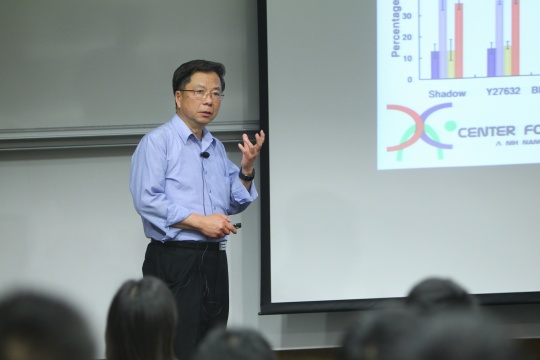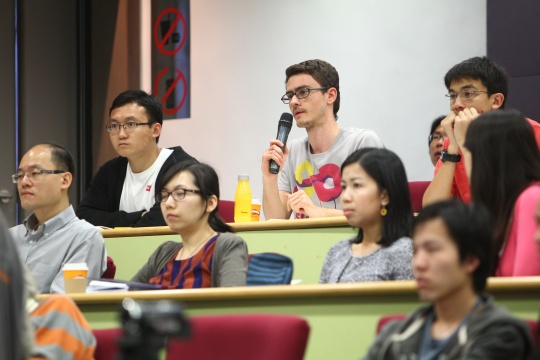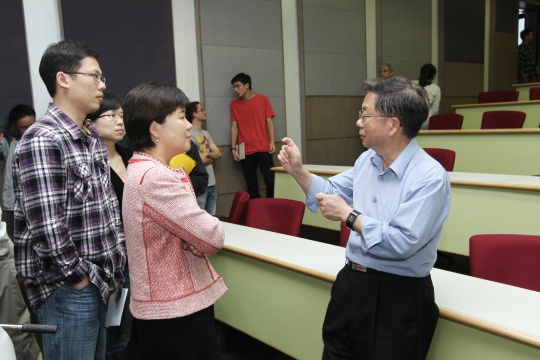The First Step from Tissue Engineering to Organ Engineering
Abstract
In biological world, cell is the most fundamental system, which consists of large number of molecules, DNA/RNA and proteins. These building blocks self-organize to form a cellular system which exhibits specific functionalities for performing a physiological function. For many types of cells, motion is an important part of their functional task. They move under the influences of local chemical and physical environment and eventually form tissue patterns which lead toward higher level structures of specific shapes.
To probe the mobility of cellular system under the influences of different initial conditions and to explore the potential of controlling various pattern formations, the speaker and his research group conducted top-down MEMS manufacturing technologies to engineer the substrates with patterns of surface molecular to spatially define the initial settlement of cells. Glass substrates were fabricated with functional surface composed of alternating stripes of fibronectin (FN) and polyethylene glycol (PEG). On such binary surface, vascular mesenchymal cells (VMCs) only attached to fibronectin stripes but not on PEG stripes while plating. By day 5, cells proliferated, spreading out from fibronectin stripes and regained the confluence.
After 15 to 20 days, the cells proliferated, moved and aggregated into regularly spaced ridges in the configuration resembling to the labyrinthine pattern driven by Turing instability. We found an interesting phenomenon that VMCs could tell left or right and move accordingly to form asymmetric tissue pattern. In other words, cells have a preferred direction of motion and accordingly self-assemble tissue patterns with left-right asymmetry.
With integrative top-down manufacturing and bottom-up self-assembly processes, the speaker and his research group can direct cells to form intricate tissue patterns resembling natural structures in organs.
About the speaker
Prof. Chih-Ming Ho received his PhD from the Johns Hopkins University in 1974. He started his career at the University of Southern California and rose to the rank of Full Professor. In 1991, he moved to the University of California, Los Angeles, where he is currently the Ben Rich-Lockheed Martin Chair Professor and Distinguished Professor in the School of Engineering. He is also the Director of Center for Cell Control (NIH Nanomedicine Roadmap program), and served as UCLA Associate Vice Chancellor for Research in 2001-2005.
Prof. Ho is known for his work in microfluidics, bio system technologies and turbulence. He is ranked by ISI as one of the top 250 most cited researchers worldwide in the entire engineering category. In 1997, Prof Ho was inducted as a Member of the US National Academy of Engineering. In the following year, he was elected as an Academician of Academia Sinica. He is also a Fellow of the American Physical Society as well as the American Institute of Aeronautics and Astronautics. Prof Ho holds seven honorary professorships. He has delivered 18 named distinguished lectures and presented over 130 keynote talks in international conferences.










